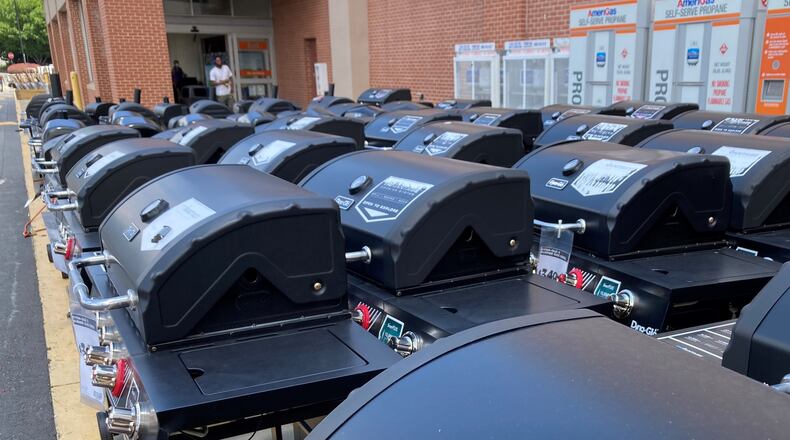Bolstered by the continued financial health of most American homeowners, Home Depot on Tuesday reported better-than-expected sales and earnings for the most recent fiscal quarter.
In a time of economic uncertainty with high inflation, rising interest rates and talk of an incipient recession, the Smyrna-based retail giant reported $43.8 billion in sales and net earnings of $5.2 billion for the past three months, outdoing analyst expectations, but also its own.
Home Depot officials had worried about consumer staying power, but the robust increase in home prices meant a surge of trillions of dollars in the amount of equity held by millions of people, and that has fueled spending on repairs and renovations.
“In the first quarter, we were somewhat surprised by the resilience of our customers and that resilience has continued,” Richard McPhail, the company’s chief financial officer, told The Atlanta Journal-Constitution.
Home Depot is an key retail bellwether for the broader economy. In the second fiscal quarter, revenues were 6.5% higher than the same period a year earlier, stronger growth than most analysts had forecast.
And while Home Depot in recent years has worked hard to capture more of spending by professionals, its success ultimately depends on the financial security of homeowners, McPhail said.
“Our customer is the homeowner, whether they are represented by a contractor of doing a project themselves,” he said.
It is not just higher prices that have been a boon to Home Depot, it’s also the decline in mobility among homeowners, he said. “That’s our hypothesis, and that is what our customers tell us.”
One of the reasons home prices have climbed is the shortage of homes for sale. That shortage, made exacerbated by the pandemic, has meant fewer people moving. And when people stay put, they are much more likely to spend money on renovations and repairs — the heart of Home Depot’s business.
The company tracks many economic signals, but the remodeling index calculated by the National Association of Homebuilders has been at record heights, a good sign for Home Depot, McPhail said.
If there is a downturn, homeowners may do less expensive projects, and Home Depot might see tighter profit margins, said Shoggi Ezeizat, a sector analyst at Third Bridge, a global research firm.
Still, unless a downturn really rattles homeowners, Home Depot should fare relatively well, he said.
“The home improvement sector tends to perform well during recessions,” Ezeizat said. “Home Depot was built in a recession in the early ‘90s.”
Shares of Home Depot stock peaked late last year at about $416, but that was before interest rates started rising. Shares fell through the spring, starting to climb again in late June.
Home Depot shares on Tuesday afternoon were trading at more than $330 a share, up more than 5% after out-doing analyst projections in the morning’s announcement. Retail giant Walmart also outperformed Wall Street expectations in its second quarter results announced Tuesday.
Kenneth Leon, an analyst at CFRA Research said later in the day he believes Home Depot is still a good investment with a good chance to reach $365 a share by year’s end.
Home Depot in recent years has added many items aimed at broadening its appeal, including home grills, the kind of items that are often indicators of consumer confidence. When times are tough, people stay away from “discretionary” items, experts say. But when such goods sell well, it’s evidence that despite any gloomy headlines, people have money to spend.
In the last quarter, Home Depot was selling a $300 giant skeleton for Halloween.
“It sold out in a matter of hours, a giant skeleton in the summer,” said McPhail. “You can’t have an item that is more discretionary than a giant skeleton.”
Credit: cus
Credit: cus
About the Author
Keep Reading
The Latest
Featured



